Clancy Tucker's Blog, page 165
December 27, 2017
28 December 2017 - TOP QUOTES TO READ
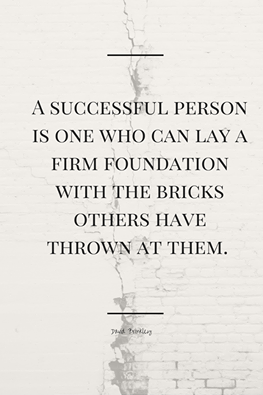
TOP QUOTESTO READ
G'day folks,
Time to check out some great quotes.

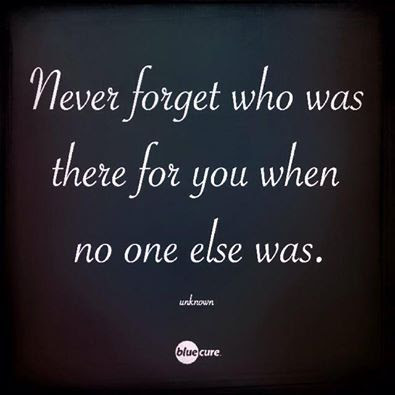
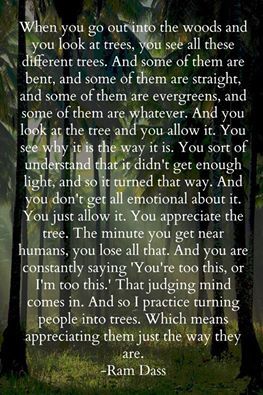
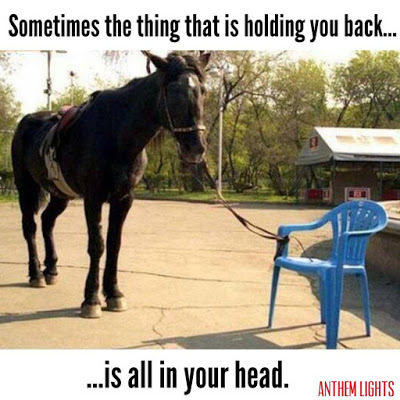
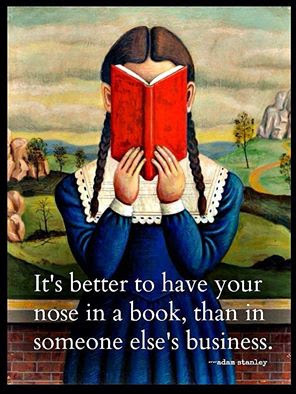
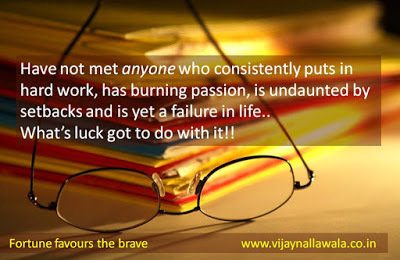

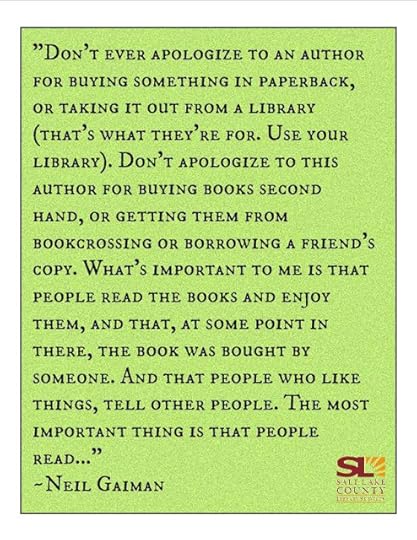
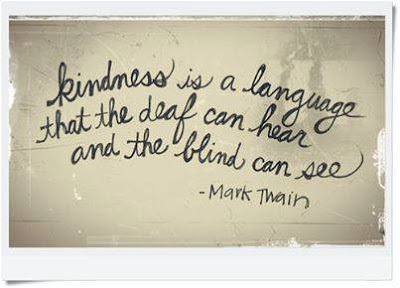
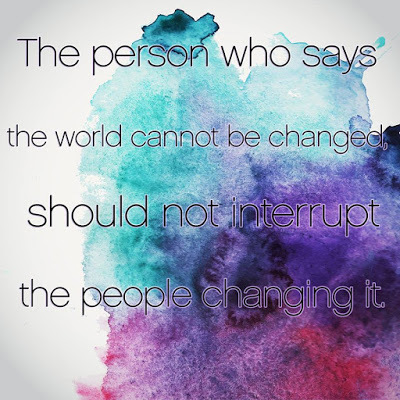
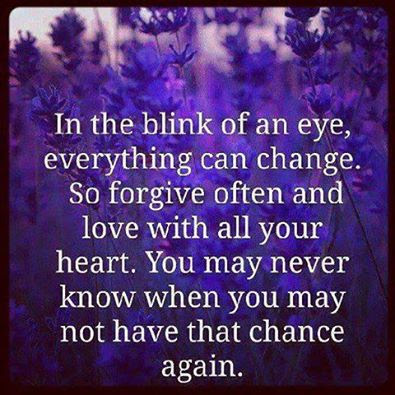
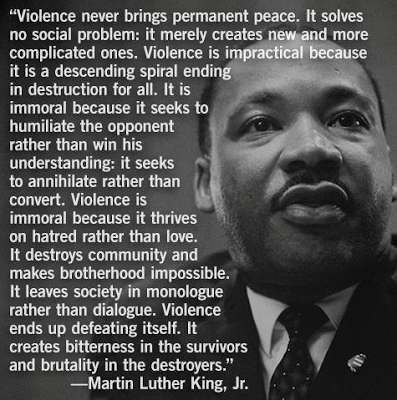


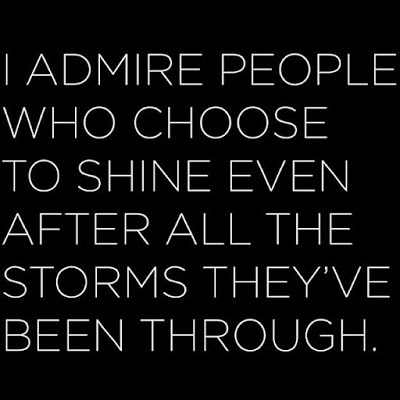
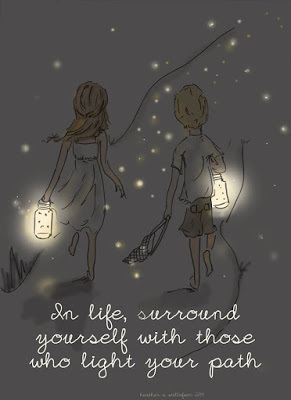

Clancy's comment: Yep, a lot of common sense here today. Sadly, it ain't that common.
I'm ....
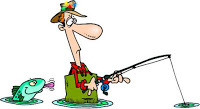

Published on December 27, 2017 11:59
December 26, 2017
27 December 2017 - DIANA SOBOLEWSKI - GUEST AUTHOR
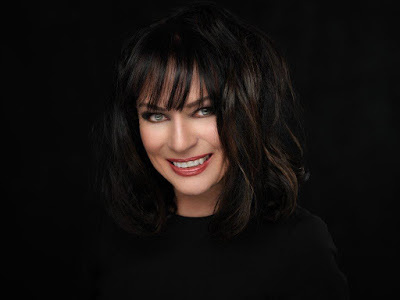
DIANA SOBOLEWSKI - GUEST AUTHOR -
G'day folks,
Today, I am pleased to interview a charming Canadian author who also speaks, reads and writes in French as a resident in Québec, and in her work with French wine producers.
Welcome, Diana ...
1. TELL US A LITTLE ABOUT YOURSELF AND YOUR WRITING JOURNEY.
First, I just want your audience to know that when the charming and accomplished Clancy Tucker invites you to do an interview for his blog, it’s quite an honour. You’re an award-winning author, poet, and photographer who teaches students at the university level, mentors emerging writers and puts out a daily blog that reaches 155 countries and has a massive following. You’re truly an inspiration. Thank you so much for the invitation.
So, a little about me. I’m the author of Private Reserve and Maximum Yield in the Desire & Luxury Wine series. These two books are published and available on Amazon in paperback and for Kindle. There are two others in the works; Master Class and Late Harvest. The titles were borrowed from the wine industry and if you suspected that they might have double meanings, you’d be right.
I’m Canadian, of Polish ancestry. I was born and raised in Montreal, Quebec where I still reside. I love Montreal because of the multi-cultural vibe. I have a Bachelor of Arts degree in Marketing Communications, was President of the Montreal Chapter of the Business/Professional Advertising Association and have worked in Marketing Communications on the corporate and agency side.
I began writing as a child and absolutely adored English class. I can’t say the same about math class. Writing courses were my favourite, right into university. Out in the work place, all of my job functions involved some form of writing.
Many years ago I developed a passion for fine wine and in 2004 establishing an agency specializing in the sale and promotion of upscale wines in the province of Quebec seemed like a natural thing to do. I found that my writing skills came in very handy when it came to persuading wine producers to allow me to represent them and eventually built up an impressive portfolio. It has since been streamlined to accommodate the writing. No one ever told me, you see, that a newcomer to the business wasn’t supposed to end up working with the rock stars of the wine world. It wasn’t easy. It’s just that I didn’t put certain limitations on myself; even if it was mostly out of ignorance.
2. WHEN AND HOW DID YOU BECOME A WRITER?
I think I’ve always known I was a writer. I just hadn’t written a book. But I’ve always wanted to. I gravitated to fiction because fiction had the power to entertain and provide escapism. And anything could happen. I enjoyed getting lost in a good mystery or thriller, but what I really loved was romance. The problem was that I didn’t have a story to tell. But, of course, I did.
I had spent years attending black tie events in Bordeaux that very few wine agents were invited to. I had been staying in private châteaux owned by legendary wine producers I used to read about in Wine Spectator and in 5 star hotels. I had been drinking rare and prestigious wines paired with dishes prepared by Michelin Star chefs. As an insider I was afforded a front row seat to this glamorous world and the bigger than life individuals that pass through it. Inspiration took.

3. WHAT TYPE OF PREPARATION DO YOU DO FOR A MANUSCRIPT? DO YOU PLAN EVERYTHING FIRST OR JUST SHOOT FROM THE HIP?
I don’t do outlines, or anything like that. I do write myself some notes that contribute to the framework or flow.
The heroine in my debut novel is a wine agent specializing in upscale wines so all of her wine industry related experiences mimic my own. I just started to write paragraphs that fleshed out her career and who she was as a woman. Certain scenarios and characters emerged along the way and the story started to take shape. I would get to the keyboard and wonder who was going to talk to me that day.
Some of the supporting characters were so interesting to me that I knew I just had to tell their stories. Besides, they wouldn’t leave me alone. So before I even finished book 1, I had written the synopsis for books 2, 3 and 4.
With book 1, I wrote scenes in no particular order and had the ending written early in the process. Then I had to figure out how to bridge the different parts of the book. With book 2, I wrote the chapters chronologically, but there are flashbacks. Like with book 1, I knew how book 2 would end mid-way through. The last thing I did was write the prologue and I found that the toughest. I am following the same process with book 3. I know what is going to happen and how the story will end, but I am writing the book chronologically. It’s not a deliberate choice. It just feels right.
4. WHAT DO YOU ENJOY MOST ABOUT BEING A WRITER?
Having control of the page. Living out fantasies through my characters and entertaining myself along the way. In the end though, my greatest thrill comes from sharing my favourite wines, venues and travel destinations through my books and wrapping it all up in a good love story.
5. WHAT IS THE HARDEST THING ABOUT BEING A WRITER?
Time management. When your characters are ready for you to get on with it and you leave them hanging because you have to deal with your day job or marketing for your book.
6. WHAT WERE YOU IN A PAST LIFE, BEFORE YOU BECAME A WRITER?
Actually, I lead a double life: Author and Wine Agent. But considering that the wine industry was the inspiration for the four books in this series, the dual careers work. I tie the two together for cross promotion quite often. I post photos of the wines I represent, which are in my books, with my books, all over social media and on my website. Sometimes with a teaser about the book and sometimes with wine tasting notes. And, I’ve started to use #wineinromancenovels in my posts.
7. WHAT IS YOUR GREATEST WRITING ACHIEVEMENT?
Saying that I was going to write a book which turned into a series of books and doing it. I now have two of the four intended books out on Amazon in paperback and for Kindle.
8. WHAT ARE YOU WORKING ON AT THE MOMENT?
I’m writing book 3. I’m about one quarter done. And I have a few chapters done for book 4, just because the ideas were there.
9. WHAT INSPIRES YOU?
Real life stories about hugely successful people who didn’t give up and achieved their dreams against all odds like authors who had their manuscripts rejected over and over and actors who slept in their cars, as well as the people who took a chance on them. Also generous people like yourself; giving of your time to mentor emerging authors.
10. WHAT GENRE DO YOU WRITE?
My books have adult content that is pertinent to the central love story; in other works the explicit scenes move the romance along and there is always a satisfying ending. That’s some of the basic criteria for erotic romance. I laughingly tell people that it’s more like erotic romance meets luxury wine & travel guide. I’ve taken to describing them as sophisticated sexy romance novels as a result.
11. DO YOU HAVE ANY TIPS FOR NEW WRITERS?
Don’t let anyone or anything dissuade you or influence you to go in a direction that doesn’t suit you. Don’t second guess yourself, but do listen to helpful advice. Believe in yourself. Don’t be discouraged at any stage. Don’t quit. Surround yourself with positive, supportive people or use negativity or scepticism to fuel your determination … works for me. Write the book that you want to write, even if it’s not the hottest current trend. Perhaps it’ll start the next hot trend. In any case, because it’s your vision and your voice it’ll be a better book. And work with an editor that has experience in your genre and understands your vision.
Read about writing and editing, do your own editing and revisions and polish your manuscript as much as you can before you turn it over to your editor. Be prepared to make more revisions after that and put in the time to proof-read. It’ll pay off. Readers will take you and your book seriously.
Do in-depth research so you get your facts right; for credibility and authenticity. There’s always someone out there that will call you on a detail that isn’t accurate. Work on character development. It will explain your characters’ motivation and actions, and make readers care about them or at least feel they know them. Relationship-building between your characters is equally important. If two characters are lovers, for example, there needs to be some chemistry between them.
If you self-publish, work with professionals on cover design and setting type. The more professional your book looks, the greater the chance that you and your work will be taken seriously.
Do research about publishing and marketing. Regardless if you are published traditionally or self-published, you are going to have to spend a fair amount of time promoting your books and your brand. And, figure out who your target market is and how to promote to them. When it comes to your brand, professional goes a long way.
Network with other authors. I have found some very generous souls out there. We share our experiences and knowledge, and we even promote each other.
I’ve learned that whatever you do for someone, always comes back to you. Plus it’s nice to know you’re not alone.
Develop a thick skin and take into consideration positive criticism without dwelling on the rest. Not everybody is going to have a good opinion of you or your work.
Show your appreciation to those who have been supportive and helpful along the way. Be that for someone else.

12. DO YOU SUFFER FROM WRITER’S BLOCK?
I don’t really suffer from writer’s block, but I do get stuck a little sometimes. When I do, I’ll spend the time productively like doing research or editing and eventually it’ll shake words and ideas loose and I’m back to writing.
13. DO YOU HAVE A PREFERRED WRITING SCHEDULE?
With my first book, I did more writing in the afternoon, while with my second book it was in the morning. And with book 3 I tend to write in the morning as well.
14. DO YOU HAVE A FAVOURITE WRITING PLACE?
I write directly on the 23 inch screen in my office. I’m a fast and usually accurate typist. I don’t normally have to look at the keys. I only use notebooks to jot down my research findings and ideas that pop into my head that need to be developed. I have a tendency to write dialogue in my head when walking the dogs for instance.
15. WHAT IS YOUR GREATEST JOY IN WRITING?
Telling a story that holds the reader’s interest, has them turning the pages and staying up late at night to find out what happens next. When what I’ve written works the way it should, I get this feeling of euphoria. I love writing scenes that evoke strong emotions or are tinged with humour. Wait, I also love writing steamy love scenes. They can be challenging, but I have received compliments on those from other authors, so I must be doing something right.
16. WHO IS YOUR FAVOURITE AUTHOR AND WHY?
I read the classics; mostly as class assignments, and enjoyed them. I was a big fan of Shakespeare’s plays early in life. I came across Gone With The Wind and my parents didn’t see me for days. I read horror and thrillers and then found bodice rippers – maybe not in that order. Later I quite liked Atlas Shrugged by Ayn Rand. But I loved, loved, loved the Outlander series by Diana Gabaldon. History was always an interest. Throw in a couple of lovers from different centuries and I couldn’t put the books down. So, yeah, Diana Gabaldon. The fact that we have the same first name, had nothing to do with it. Well very little. But it was nice to see Diana on a book cover and imagine.
17. WHAT’S THE GREATEST COMPLIMENT YOU EVER RECEIVED FROM A READER?
“This is not a typical erotic romance novel.”
18. WHAT WAS THE WORST COMMENT FROM A READER?
“This is not a typical erotic romance novel.”
19. WRITERS ARE SOMETIMES INFLUENCED BY THINGS THAT HAPPEN IN THEIR OWN LIVES. ARE YOU?
Totally. I have so many rich experiences to draw on from the upscale wine business. When I started writing book 1, people and events and experiences I hadn’t thought about that much for a while, started to emerge, and my wine agent heroine was leading the charge. It’s amazing what the brain stores and with the right prompting, fascinating memories come to the surface and you can use them to create a character or storyline. Having a little experience under my belt as the author of steamy romance novels, my heroine in book 2 had to be the author of erotic romance novels. Anything you can fish out of your own experiences adds that desirable element of authenticity.
20. OTHER THAN WRITING, WHAT ELSE DO YOU LOVE?
I’m sure it’ll come as no surprise when I say: to indulge in fine wine and fine dining. Travel is right up there. All in the name of research, of course.
21. DID YOU HAVE YOUR BOOK / BOOKS PROFESSIONALLY EDITED BEFORE PUBLICATION?
I did my research and found an editor who had the kind of experience I was looking for. We clicked. She really got me and pushed me to do better. We really worked well together … once I stopped fighting her.
22. DESCRIBE YOUR PERFECT DAY.
After a nutritious breakfast and my second cappuccino, I go through my emails and there is nothing pressing to take me away from writing. By 7:15 I’m reading what I had previously written and the ideas just keep flowing from my mind through my fingertips until I see words, then sentences and paragraphs on the screen. I feel in my bones that it’s good stuff. When I’m interrupted, it’s good news. Something that bolsters my enthusiasm … like an invitation to do an interview for Clancy Tucker’s Blog. I voluntarily take a break to have lunch and take the dogs for a walk, meeting up with neighbours and shamelessly promoting my books. I return to the keyboard and fresh ideas emerge and I’m assembling them on the page. I don’t see the time go by, but the word count is up quite a bit. I finish at the end of a chapter. I read and edit what I have written this day and I jot down ideas for next time. It’s been a good day. I deserve a glass of wine.
23. IF YOU WERE STUCK ON A DESERT ISLAND WITH ONE PERSON, WHO WOULD IT BE? WHY?
Funny you should ask that because that is just what happens in my first book. The scene is very romantic and pivotal, so it would have to be Torsten Lucas Furst, the hero in that book. I am a romance writer after all.
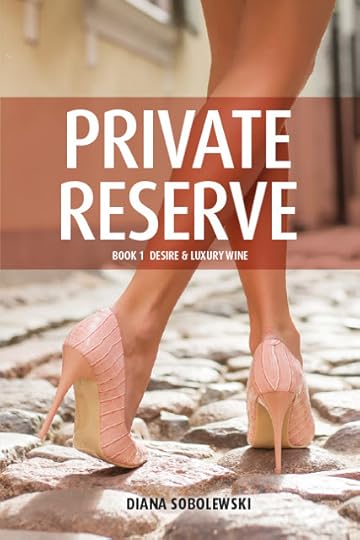
24. WHAT WOULD YOU SAY IF YOU HAD THE CHANCE TO SPEAK TO WORLD LEADERS?
The truth is stranger than fiction. I’m seriously worried.
25. WHAT ARE YOUR PLANS FOR THE FUTURE?
My immediate plans are to complete book 3 and 4 in the series and to promote the heck out of all of them. I also need to team up with a dynamic forward thinking literary agent for foreign market deals. That’s a top goal.
26. WHAT ARE YOUR VIEWS ON BOOK TRAILERS? DO THEY SELL BOOKS?
I don’t have any experience with book trailers as an author. As a reader, I could be influenced to buy. I’d like to give it shot one day soon. I think.
27. DO YOU SEE YOURSELF IN ANY OF YOUR CHARACTERS?
Ela Zalewski, the wine agent in book 1 and I are very much alike. We’re both Montrealers of Polish ancestry with the same education and work ethic. We like the same things and dislike the same things. We’re both headstrong and think we’re always right. We believe in destiny, but hedge our bets by doing our part. I even poke fun at myself, by giving the poor woman all of my quirky traits. A lot of it is self-indulgent, but it would be more so if she was perfect. She’s far from perfect. But I think that makes her more relatable. She surpassed all of my expectations in the end and these days she’s my role model. I find myself asking what Ela would do in this situation. Isla Duncan, author of erotic romance novels, Montrealer, Ela’s best friend and my heroine in book 2 is a treasure. I see some of me in her, but I was braver this time around and able to venture into other territory. And I’m pushing in other directions with Isabel Vega, in book 3 and Brenna Ryan in book 4. Still, I am writing them from a place of familiarity to some degree.
And when it comes to the men, Torsten Lucas Furst, in book 1, and Jonas Koertig in book 2, they mysterious Xander in book 3 and Emile Delacroix in book 4, well they embody my values at the end of the day, but just have a little trouble getting there. But they are quite irresistible at every stage of their journey, so I don’t hold it against them.
28. DOES THE PUBLISHING INDUSTRY FRUSTRATE YOU?
Agents and publishers preach about a fresh or original voice, but go for the same books over and over. I also wish that more agents would be willing to take on self-published books for foreign rights deals. This is a big problem I grapple with.
Canada is going to be the guest of honour at the Frankfurt Book Fair 2020 and it is rumoured that France and Germany are the big markets of interest. I’m Canadian, I have written Canadian heroines and German heroes against the backdrop of glamourous venues in Montreal, Bordeaux, Rome and Bavaria, featuring fine wines and fine dining. It is my understanding that romance is still a billion dollar a year industry and erotic romance made inroads at the Frankfurt Book Fair after the popularity of the Fifty Shades of Grey trilogy, especially if there was a trilogy or series. I can’t help but see the irony. I think that there will be many missed opportunities.
29. DID YOU EVER THINK OF QUITTING?
Never. It’s not in my vocabulary. Working to establish myself as an author is much the same as when I was working to establish myself as an entrepreneur wine agent. Having survived the first experience and having achieved those goals, taught me to persevere in whatever I take on, and I’m optimistic by nature anyway. Nothing good ever came out of a defeatist attitude.
30. WHAT WAS YOUR FAVOURITE MANUSCRIPT TO WRITE? WHY?
It’s like being asked to choose between your children, I imagine, had I any. I’m going to have to go with my first born. My debut novel has so many humorous scenes and so much humour-filled dialogue. I was literally laughing out loud as I was writing. Ela Zalewski, the heroine was so quirky sometimes, that she just invited humour, but the hero’s best friend Jonas Koertig really cracked me up. He loves to hog the page and he is so unexpected. He would do whatever I wanted, no matter how outrageous. He wasn’t held back by convention. There’s actually a term for the type of personality that Jonas exemplifies: highly creative, eccentric and very successful. It’s Cognitive Dishibition. If there was a whole planet of these individuals, Jonas would be their leader.
31. HOW WOULD YOU DEFINE ‘SUCCESS’ AS A WRITER.
In stages. Writing and publishing. Positive reviews. Awards. Bestseller status. Published in several languages. Name and brand recognition. Volume sales. Financial independence and financial security, and the means to help support charities I feel strongly about. To be able continue doing what I love. Being in the position to remember everyone that helped me in some meaningful way. Never taking my readers for granted by continuing to giving them what they have come to expect. Having the knowledge and experience to help other writers reach their potential.
32. WHAT SHOULD READERS WALK AWAY FROM YOUR BOOKS KNOWING? HOW SHOULD THEY FEEL?
That my characters were well-developed, interesting and memorable, and though they lead extraordinary lives, were still believable. That the steamy love scenes were not gratuitous, but fit the story. That story was intriguing and had a satisfying ending. That they want to keep reading my books and recommending them to family and friends. That they want to reach out to let me know.
33. WOULD YOU LIKE TO HAVE YOUR BOOKS MADE INTO MOVIES? EVER WRITTEN A SCREENPLAY?
I’d be doing back flips if that happened. I’ve never written a screen play and it’s not a pressing interest. I see myself more as a consultant working in tandem with an award-winning screen play writer. Notice, how I said award-winning? If you’re going to dream, why not dream big?

34. HOW MUCH THOUGHT GOES INTO DESIGNING A BOOK COVER?
A book cover has to have shelf-appeal even where’s there’s no physical shelf. And it has to look good in a thumbnail version because that’s what readers see online. The cover sets expectations, so it should represent the content. And a professionally designed book cover will make a big difference in the book being perceived as quality work. These days, there are many self-published books with covers that are equal to or even surpass the covers of traditionally published books. Self-published authors are learning that covers that look home-made don’t cut it in a highly competitive market.
The communications specialist and designer I worked with, and I, decided that the covers for my Desire & Luxury Wine series had to be upbeat, have unifying elements that communicated that each book was part of the series and had to have a classy sexy European feel rather than a provocative look, so that someone reading the paperback on a bus wouldn’t feel self-conscious. The feedback has been very favourable.
35. WHAT’S YOUR ULTIMATE DREAM?
To be published in other languages; starting with French and German when it comes to the Desire & Luxury Wine series and beyond, and sell well by industry standards in each market book after book.
36. WRITING IS ONE THING. WHAT ABOUT MARKETING YOU, YOUR BOOKS AND YOUR BRAND? ANY THOUGHTS?
With promotional activity a big part of what I do for my wine producers and in my background, my mind works that way to start with. But, with the ever changing world of social media, it takes work to stay on top of all of the opportunities out there. And in book marketing even more so. Actually, maybe not so much opportunity as necessity. I had to get marketing savvy in a new age, really fast. And I’m still learning. That’s never going to stop. I can’t afford to let it when book marketing is evolving every day. And I’m not sure I would ever want to put it entirely in someone else’s hands.
37. ARE YOUR BOOKS SELF-PUBLISHED?
After living with a manuscript for so long, the idea of submitting it to agents and publishers and having to wait for months just to get a refusal, which happens most of the time, made me cringe. I wanted to see my book for sale, hold a paperback in my hands and have a copy on my e-reader. That’s what made it real to me. I just didn’t have the patience to sit around waiting and hoping, when I could be using the time to market the book. And I liked having the control.
38. DESCRIBE YOURSELF IN FIVE WORDS.
Marketing-oriented wine-loving romantic.
39. WHAT PISSES YOU OFF MOST?
Books with adult content are not going to be everyone’s cup of tea, but to assume arbitrarily that books with adult content can’t possibly have any substance is just wrong. Why can’t a novel categorized as erotic romance have well-researched material and introduce well-developed characters and intriguing story lines? Oh, and be well-written and well-edited? As I said, the heroine in book 2 is the author of erotic romance novels and she has to deal with that kind of thinking. In a way, I think that was my “push back”.
40. WHAT IS THE TITLE OF THE LAST BOOK YOU READ? GOOD ONE?
I read two books back to back by the same author. They were The Fourth Reich and War Merchant by Patrick Parker. It’s been a while since I read a good suspense-thriller. They certainly measured up. I found the author on social media and was intrigued enough to look into his background. With his knowledge and experience, he is well qualified to write action-filled stories that crisscross the globe and have you wondering what is fiction, what is reality?
41. WHAT WOULD BE THE VERY LAST SENTENCE YOU’D WRITE?
In one of my books, it would be something to motivate readers to read the next book, without it being a cliffhanger in the traditional sense.
For my life, it would read: The best is yet to come.
42. WHAT WOULD MAKE YOU HAPPIER THAN YOU ARE NOW? CARE TO SHARE?
I already have so much to be thankful for in my personal life. In my professional life as an author, I’d like to be instrumental in changing attitudes about erotic romance and as for the rest, I’m going back to some of what I mentioned earlier: Bestseller status. Published in several languages. Name and brand recognition. Volume sales. Financial independence and financial security.

43. ANYTHING YOU’D LIKE TO ADD?
Thank you for giving me this opportunity to talk about my experiences and express my point of view on the popular Clancy Tucker’s Blog. And I would like to thank your audience for the privilege as well.
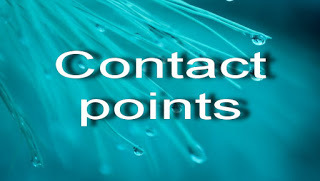
WEBSITEAMAZONGOODREADS
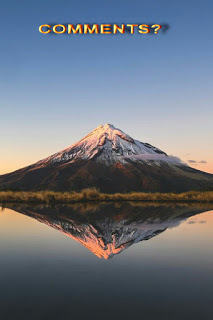 Clancy's comment: Many thanks, Diana, especially for your kind words. Have a glass for me. In fact, have two, and give my best wishes to Canada.
Clancy's comment: Many thanks, Diana, especially for your kind words. Have a glass for me. In fact, have two, and give my best wishes to Canada.I'm ...
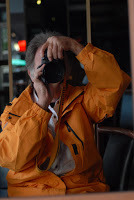

Published on December 26, 2017 11:51
December 25, 2017
26 December 2017 - Guggenheim Museum in New York City

Guggenheim Museum in New York City G'day folks, The Solomon R. Guggenheim Museum, often referred to as The Guggenheim, is an art museum located at 1071 Fifth Avenue on the corner of East 89th Street in the Upper East Side neighborhood of Manhattan, New York City.

In 1959, on New York City’s Fifth Avenue, thousands of people lined up outside a bizarrely shaped white concrete building that resembled a giant upside-down cupcake. It was opening day at the new Guggenheim Museum, home to one of the world’s top collections of contemporary art.
Mining tycoon Solomon R. Guggenheim began collecting art seriously when he retired in the 1930s. With the help of Hilla Rebay, a German baroness and artist, Guggenheim displayed his purchases for the first time in 1939 in a former car showroom in New York. Within a few years, the collection—including works by Vasily Kandinsky, Paul Klee and Marc Chagall—had outgrown the small space. In 1943, Rebay contacted architect Frank Lloyd Wright and asked him to take on the work of designing not just a museum, but a “temple of spirit,” where people would learn to see art in a new way.
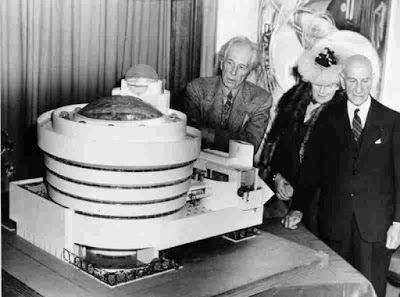
Over the next 16 years, until his death six months before the museum opened, Wright worked to bring his unique vision to life. To Wright’s fans, the museum that opened on October 21, 1959, was a work of art in itself. Inside, a long ramp spiraled upwards for a total of a quarter-mile around a large central rotunda, topped by a domed glass ceiling. Reflecting Wright’s love of nature, the 50,000-meter space resembled a giant seashell, with each room opening fluidly into the next.

Wright’s groundbreaking design drew criticism as well as admiration. Some felt the oddly-shaped building didn’t complement the artwork. They complained the museum was less about art and more about Frank Lloyd Wright. On the flip side, many others thought the architect had achieved his goal: a museum where building and art work together to create “an uninterrupted, beautiful symphony.”

Located on New York’s impressive Museum Mile, at the edge of Central Park, the Guggenheim has become one of the city’s most popular attractions. In 1993, the original building was renovated and expanded to create even more exhibition space. Today, Wright’s creation continues to inspire awe, as well as odd comparisons—a Jello mold! a washing machine! a pile of twisted ribbon!—for many of the 900,000-plus visitors who visit the Guggenheim each year.
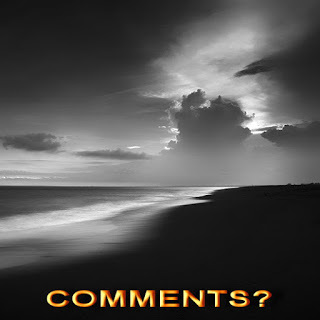
Clancy's comment: I've not been there, but I'm sure it's worth a visit.
I'm ...
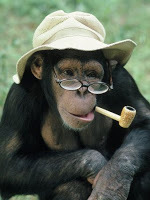

Published on December 25, 2017 11:57
December 24, 2017
25 December 2017 - CHRISTMAS AROUND THE WORLD
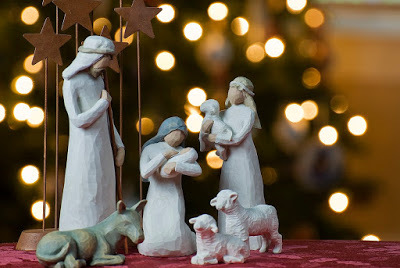
CHRISTMAS AROUND THE WORLD
G'day folks,
Merry Christmas to you all. Ever wonder what other nationalities do at this time of the year?
Christmas as we know it today is a Victorian invention of the 1860s. Probably the most celebrated holiday in the world. Our modern Christmas is a product of hundreds of years of both secular and religious traditions from around the globe. Today, discover the origins of Christmas traditions from around the world, like the Yule log, caroling and how Christmas is celebrated “Down Under.”
Sweden: ‘God Jul!’
Most people in Scandinavian countries honor St. Lucia (also known as St. Lucy) each year on December 13. The celebration of St. Lucia Day began in Sweden, but had spread to Denmark and Finland by the mid-19th century.
In these countries, the holiday is considered the beginning of the Christmas season and, as such, is sometimes referred to as “little Yule.” Traditionally, the oldest daughter in each family rises early and wakes each of her family members, dressed in a long, white gown with a red sash, and wearing a crown made of twigs with nine lighted candles. For the day, she is called “Lussi” or “Lussibruden (Lucy bride).” The family then eats breakfast in a room lighted with candles.
Any shooting or fishing done on St. Lucia Day was done by torchlight, and people brightly illuminated their homes. At night, men, women, and children would carry torches in a parade. The night would end when everyone threw their torches onto a large pile of straw, creating a huge bonfire. In Finland today, one girl is chosen to serve as the national Lucia and she is honored in a parade in which she is surrounded by torchbearers.

Light is a main theme of St. Lucia Day, as her name, which is derived from the Latin word lux, means light. Her feast day is celebrated near the shortest day of the year, when the sun’s light again begins to strengthen. Lucia lived in Syracuse during the fourth century when persecution of Christians was common. Unfortunately, most of her story has been lost over the years. According to one common legend, Lucia lost her eyes while being tortured by a Diocletian for her Christian beliefs. Others say she may have plucked her own eyes out to protest the poor treatment of Christians. Lucia is the patron saint of the blind.
Finland: ‘Hyvää Joulua!’
Many Finns visit the sauna on Christmas Eve. Families gather and listen to the national “Peace of Christmas” radio broadcast. It is customary to visit the gravesites of departed family members.

Norway: ‘Gledelig Jul!’
Norway is the birthplace of the Yule log. The ancient Norse used the Yule log in their celebration of the return of the sun at winter solstice. “Yule” came from the Norse word hweol, meaning wheel. The Norse believed that the sun was a great wheel of fire that rolled towards and then away from the earth. Ever wonder why the family fireplace is such a central part of the typical Christmas scene? This tradition dates back to the Norse Yule log. It is probably also responsible for the popularity of log-shaped cheese, cakes, and desserts during the holidays.
Germany: ‘Froehliche Weihnachten!’
Decorating evergreen trees had always been a part of the German winter solstice tradition. The first “Christmas trees” explicitly decorated and named after the Christian holiday, appeared in Strasbourg, in Alsace in the beginning of the 17th century. After 1750, Christmas trees began showing up in other parts of Germany, and even more so after 1771, when Johann Wolfgang von Goethe visited Strasbourg and promptly included a Christmas tree is his novel, The Suffering of Young Werther. In the 1820s, the first German immigrants decorated Christmas trees in Pennsylvania. After Germany’s Prince Albert married Queen Victoria, he introduced the Christmas tree tradition to England. In 1848, the first American newspaper carried a picture of a Christmas tree and the custom spread to nearly every home in just a few years.
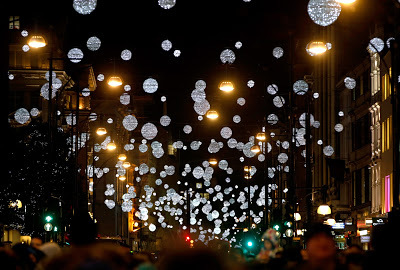
Mexico: ‘Feliz Navidad!’
In 1828, the American minister to Mexico, Joel R. Poinsett, brought a red-and-green plant from Mexico to America. As its colouring seemed perfect for the new holiday, the plants, which were called poinsettiasafter Poinsett, began appearing in greenhouses as early as 1830. In 1870, New York stores began to sell them at Christmas. By 1900, they were a universal symbol of the holiday.
In Mexico, papier mache sculptures called pinatas are filled with candy and coins and hung from the ceiling. Children then take turns hitting the pinata until it breaks, sending a shower of treats to the floor. Children race to gather as much of of the loot as they can.
England: ‘Merry Christmas!’
An Englishman named John Calcott Horsley helped to popularize the tradition of sending Christmas greeting cards when he began producing small cards featuring festive scenes and a pre-written holiday greeting in the late 1830s. Newly efficient post offices in England and the United States made the cards nearly overnight sensations. At about the same time, similar cards were being made by R.H. Pease, the first American card maker, in Albany, New York, and Louis Prang, a German who immigrated to America in 1850.
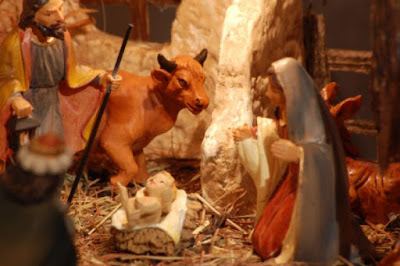
Celtic and Teutonic peoples had long considered mistletoe to have magic powers. It was said to have the ability to heal wounds and increase fertility. Celts hung mistletoe in their homes in order to bring themselves good luck and ward off evil spirits. During holidays in the Victorian era, the English would hang sprigs of mistletoe from ceilings and in doorways. If someone was found standing under the mistletoe, they would be kissed by someone else in the room, behavior not usually demonstrated in Victorian society.
Plum pudding is an English dish dating back to the Middle Ages. Suet, flour, sugar, raisins, nuts, and spices are tied loosely in cloth and boiled until the ingredients are “plum,” meaning they have enlarged enough to fill the cloth. It is then unwrapped, sliced like cake, and topped with cream.
Caroling also began in England. Wandering musicians would travel from town to town visiting castles and homes of the rich. In return for their performance, the musicians hoped to receive a hot meal or money.
In the United States and England, children hang stockings on their bedpost or near a fireplace on Christmas Eve, hoping that it will be filled with treats while they sleep. In Scandinavia, similar-minded children leave their shoes on the hearth. This tradition can be traced to legends about Saint Nicholas. One legend tells of three poor sisters who could not marry because they had no money for a dowry. To save them from being sold by their father, St. Nick left each of the three sisters gifts of gold coins. One went down the chimney and landed in a pair of shoes that had been left on the hearth. Another went into a window and into a pair of stockings left hanging by the fire to dry.

France: ‘Joyeux Noël!’
In France, Christmas is called Noel. This comes from the French phrase les bonnes nouvelles, which means “the good news” and refers to the gospel.
In southern France, some people burn a log in their homes from Christmas Eve until New Year’s Day. This stems from an ancient tradition in which farmers would use part of the log to ensure good luck for the next year’s harvest.
Italy: ‘Buon Natale!’
Italians call Chrismas Il Natale, meaning “the birthday.”
Australia
In Australia, the holiday comes in the middle of summer and it’s not unusual for some parts of Australia to hit 100 degrees Farenheit on Christmas day.
During the warm and sunny Australian Christmas season, beach time and outdoor barbecues are common. Traditional Christmas day celebrations include family gatherings, exchanging gifts and either a hot meal with ham, turkey, pork or seafood or barbeques.
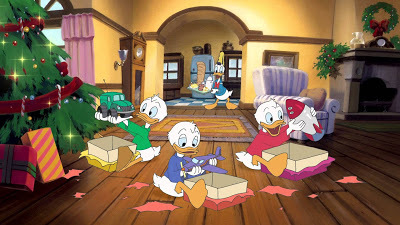
Ukraine: ‘Srozhdestvom Kristovym!’
Ukrainians prepare a traditional twelve-course meal. A family’s youngest child watches through the window for the evening star to appear, a signal that the feast can begin.
Canada
Most Canadian Christmas traditions are very similar to those practiced in the United States. In the far north of the country, the Eskimos celebrate a winter festival called sinck tuck, which features parties with dancing and the exchanging of gifts.
Greece: ‘Kala Christouyenna!’
In Greece, many people believe in kallikantzeri, goblins that appear to cause mischief during the 12 days of Christmas. Gifts are usually exchanged on January 1, St. Basil’s Day.
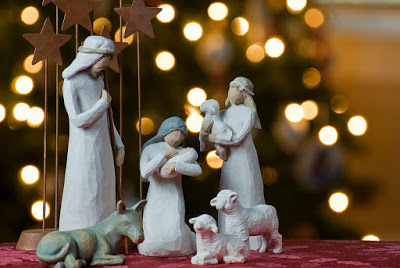
Central America
A manger scene is the primary decoration in most southern European, Central American, and South American nations. St. Francis of Assisi created the first living nativity in 1224 to help explain the birth of Jesus to his followers.
Jamestown, Virginia
According to reports by Captain John Smith, the first eggnog made in the United States was consumed in his 1607 Jamestown settlement. Nog comes from the word grog, which refers to any drink made with rum. ONE OF MY FAVOURITE VIDEOS OF ALL TIME

DO THEY KNOW IT'S CHRISTMAS
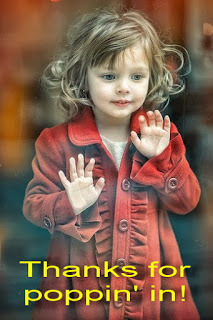

Clancy's comment: Merry Christmas, and thank you to all those who agreed to be interviewed on my blog this year. Many thanks also to all of you who follow this blog.
What am I doing on this day? Well, I'm doing what I did last year. I'm helping out at a community Christmas lunch for all those who have no one to share Christmas. It's hard work but very satisfying.
Love ya work!
I'm ...

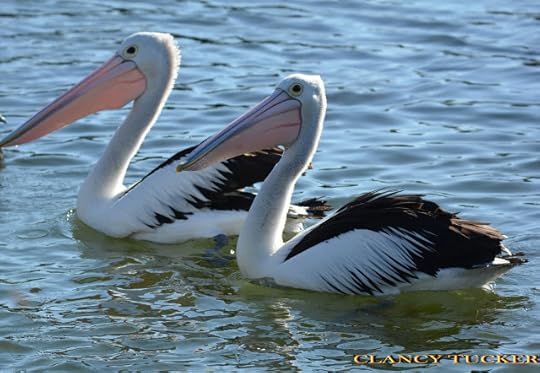
Published on December 24, 2017 11:36
December 23, 2017
24 December 2017 - MERRY CHRISTMAS AND THANK YOU

MERRY CHRISTMASANDTHANK YOU
G'day folks,
Well, here we are again, but at least we are still here. Merry Christmas to you all, and thank you for following this blog. Thank you to my guests as well. Let's hope it's a better year in 2018. This has not been a wonderful year for me personally. I gave my third eulogy in two years and regularly visited my brother in palliative care for a few months until he finally left us.
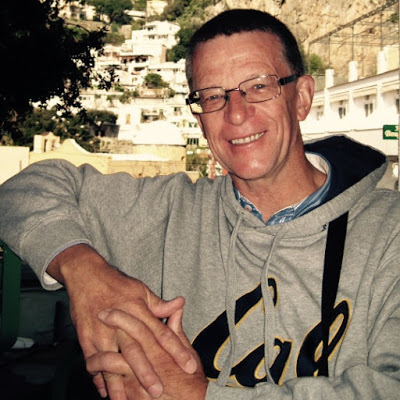 'Ged'
'Ged'However, my brother had two grandsons arrive. Jasper arrived the day he entered palliative care, and the other, Arlo, arrived a week after he died. As most of you would know, it's tough watching someone slip away.
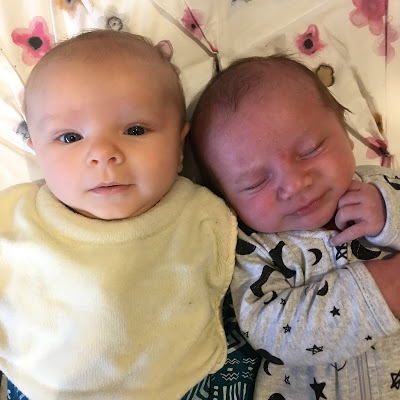 Arlo and Jasper
Arlo and JasperI had planned to spend a few months in S.E. Asia this year, but cancelled the trip and spent the time visiting my brother. However, I've just re-booked the same trip for April 2018, hoping to begin two new novels and also visit Laos and Cambodia for photography. And, recharge my batteries.
Other than moving house, painting my new abode and landscaping the garden, it's been a busy year in many ways. Again, I'm teaching, and also heavily involved in other community organizations.
 The main water feature in my courtyard
The main water feature in my courtyard This blog has been going for more than six years without missing a day, and this year I've continued to promote other creative people as always. Some of their photographs are below. Many are authors, writers, academics and film makers.
Book sales have slumped this year, but I'm keen to keep writing. I will not live long enough to write what I plan to write. Hopefully, my tenth book, Love Ya Work!, will have been released before you read this post.
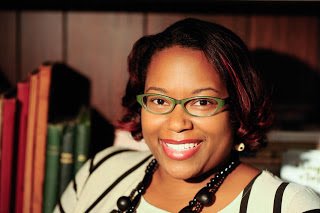
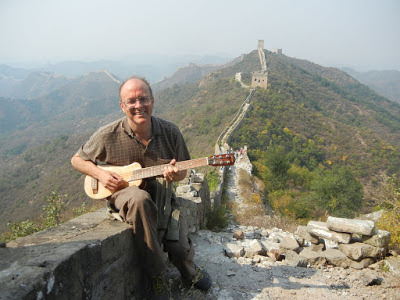
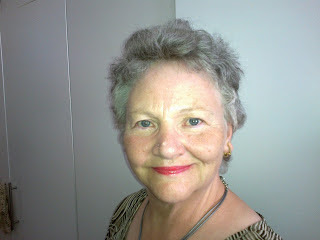
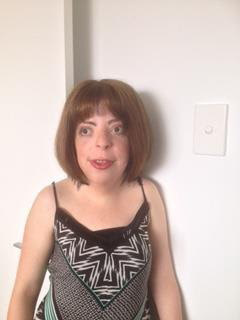
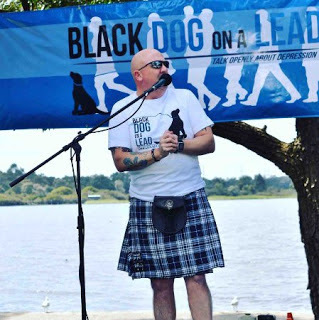
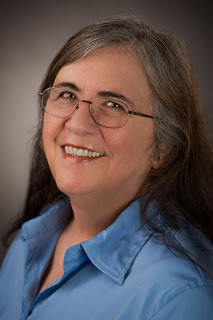
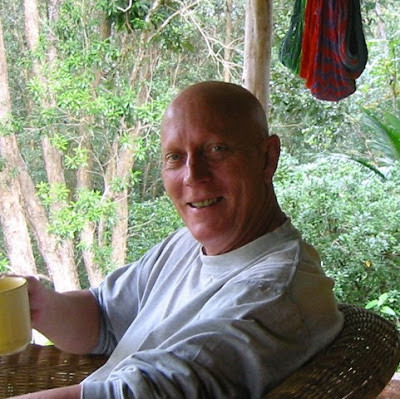
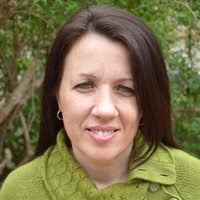

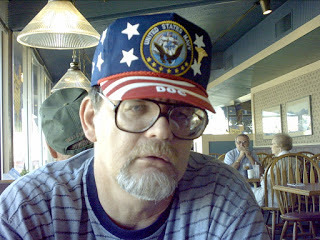
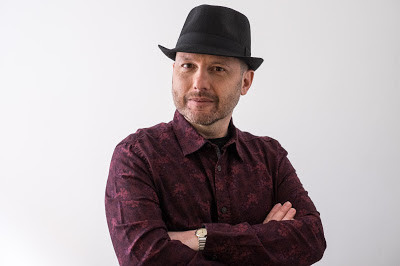
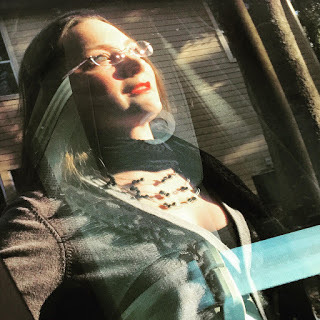
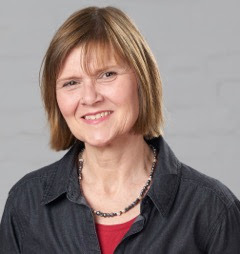
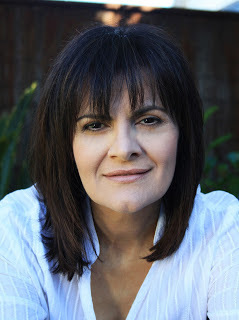
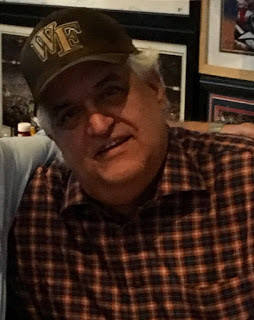
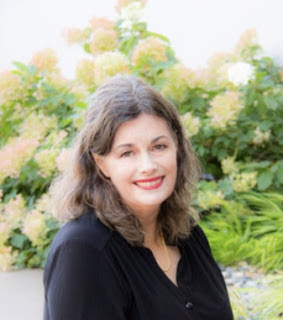
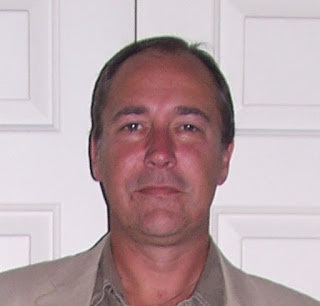
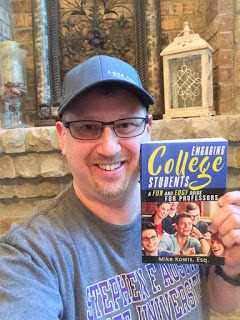
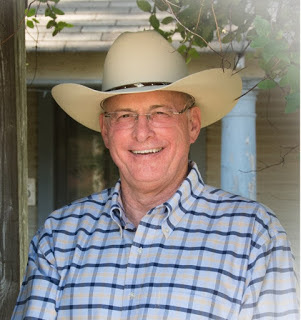
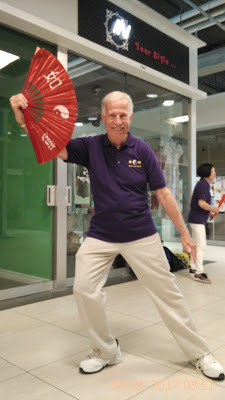
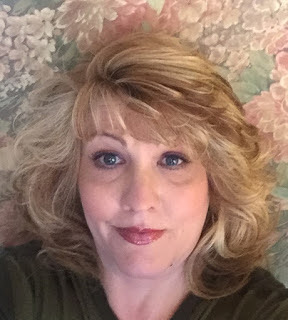
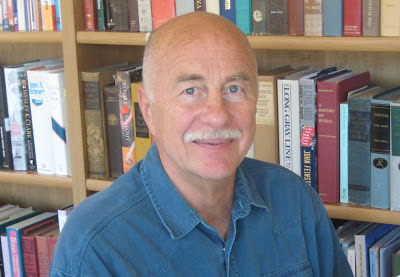
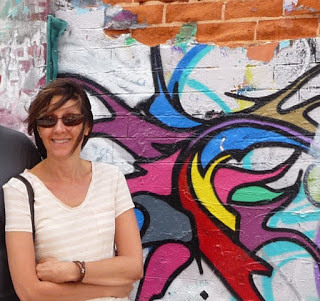

Clancy's comment: So, Merry Christmas and a happy new year to you all, especially those who have left comments, or been featured as a guest. This Christmas Day I will be doing what I did last year - helping out at our community Christmas dinner for the under-privileged.
Take care and share the love. Life's short - use it - there is plenty to do.
Love ya work!
I'm ...
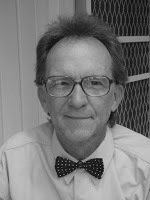

Rest In Peace, 'GED'
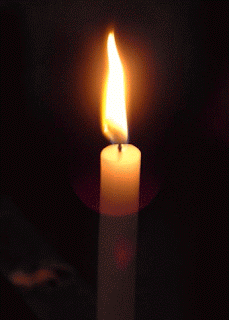
Published on December 23, 2017 16:57
December 22, 2017
23 December 2017 - THE AMAZING CUCKOO
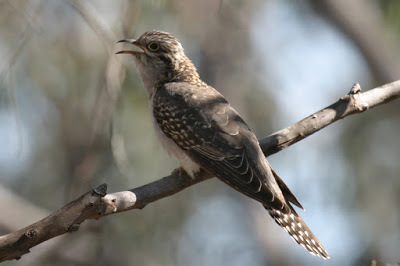
THE AMAZING CUCKOO
G'day folks,
A cuckoo chick’s call can be so loud and demanding when wanting food that it can persuade birds other than its foster parent to feed it.
Quick Facts
Type: BirdDiet: InsectivoreLifespan: Limited data. Just under 7 years is the maximum age recordedSize: Around 33 cm in length with a wingspan of 55-60 cmWeight: 110-130 g (males heavier than females)Habitat: Open woodland, marshes, heaths, alpine areas and steppe forestRange: Africa, Europe and AsiaScientific name: Cuculus canorus Amazing Facts About the CuckooMigrating north from Africa, the first male common cuckoos (‘cuckoos’) reach Europe in mid-April. In the minds of most country people, spring only truly arrives when the first cuckoo call is heard.The male cuckoo is famous for its’ distinctive ‘koo-kooo’ call, which has been imitated by clockmakers world-wide (the cuckoo clock, where-by rather than the clock chiming, it will make a koo-kooo sound). Females have a bubbly chuckle sound different from the males.The best time to hear a cuckoo is during most evenings between mid-April and June.The cuckoo is a brood parasite. It is well-known for its habit of laying an egg in the nest of another bird, then leaving the offspring to be hatched and fed by ‘foster parents’. This cunning tactic allows for more young cuckoos to be reared than would otherwise be possible.The mother will try and find the nest later to ensure the foster parents are feeding her chick the right diet for her young, which includes caterpillars, grasshoppers, flies, beetles, and small snails.The cuckoo’s favoured foster parent species include pipits, warblers, dunnocks and robins.A cuckoo chick’s call can be so loud and demanding when wanting food that it can persuade birds other than its foster parent to feed it.Juveniles migrate several weeks later than their real parents, yet they can still find their way to the regular wintering area despite never having visited it before. Cuckoos feed on the ground, but they walk rather clumsily.In flight, a cuckoo can often be confused with a sparrow-hawk with its long, pointed wings and grey-flecked under parts. It is thought that this mimicry may be a deliberate ruse to frighten a smaller bird off its nest, enabling the female to lay her own egg there.While it may be easy to hear the call of the cuckoo, which carried over long distances, sightings are harder as they have a dull plumage and tend to hide within leafy cover.Cuckoos tend to avoid towns and cities, but inhabit various types of countryside, including woodland margins, open farmland, hedgerows and marshes. These habitats are most likely to offer abundant rearing sites.The cuckoo is named in most languages after its call. In France, for example, it is known as the coucou, in Holland koekoek, in Germany kuckuk, in Russia kukush-ka and in Japan kak-ko.The cuckoo has long been associated with fate for humans. Numerous beliefs exist, including: it is good luck to have money in your pocket when you hear a cuckoo; whatever you are doing when you hear a cuckoo, you should repeat throughout the year as the call was a sign that the particular activity will be beneficial; for single people, the number of calls or notes would signify how many years they would remain unmarried; and in Sweden, the direction of the call signifies either good luck (west), death (south), consolation (east), or sorrow (north).
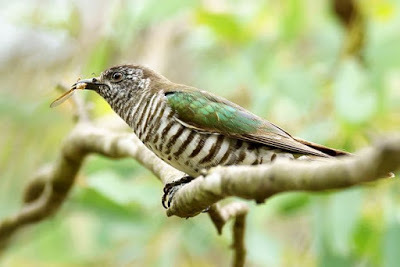

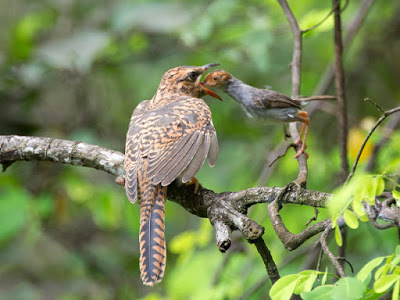
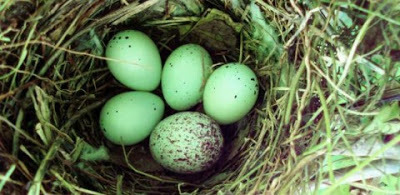
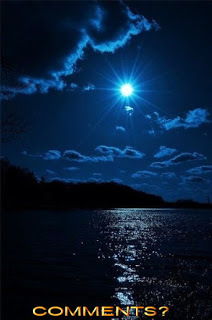
Clancy's comment: Interesting birds, eh? The more I discover about creatures, the more I'm intrigued about them all.
I'm ...
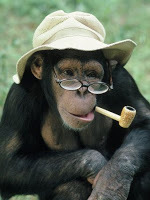
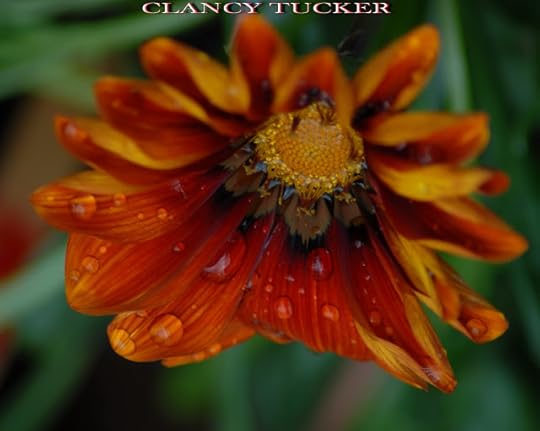
Published on December 22, 2017 12:31
December 21, 2017
22 December 2017 - CAROLE McENTEE-TAYLOR - GUEST AUTHOR

CAROLE McENTEE-TAYLOR - GUEST AUTHOR -
G'day folks,
Today, I'm fortunate to be interviewing a very interesting author with some amazing books.
Welcome, Carole ...
1. TELL US A LITTLE ABOUT YOURSELF AND YOUR WRITING JOURNEY.
I grew up surrounded by books. My parents both loved reading, my father was into murder, detective, adventure and espionage stories while my mother read historical fiction and romance so I grew up with a passion for reading most genres and this is reflected in my novels which, although set in the first half of the 20th Century, are a mixture of all these. I have always been a voracious reader. I’d spend hours in the library as a child and spent all my pocket money on books, progressing quickly from Enid Blyton to Agatha Christie amongst others. I’d rush home with my latest books, disappear up into my bedroom and not come down again until they were finished. My Dad always used to say they were a waste of money because I could get through two or three books in a weekend but they weren’t. They were my escape from reality and the more I read the more it fuelled my imagination. As I grew older I read anything I could get my hands on, crime, thrillers, historical fiction, occasionally romance and science fiction and of course chic lit! The library was my second home and I would always come out with the maximum number of books I could borrow and they were always returned well before the due date. I liked big books I could lose myself in, probably to escape my disastrous relationships. Prams, pushchairs and my arms groaned under the weight but it was worth it to stay sane.
2. WHEN AND HOW DID YOU BECOME A WRITER?
I write both military history and historical fiction but the military history came first and the inspiration behind my writing was my father in law, Ted Taylor.Ted was conscripted into the Rifle Brigade in September 1939 and fought in the Defence of Calais in May 1940 after which he spent five years as a POW in Poland. Although he’d never spoken about it we finally managed to persuade him to talk on tape and received a very sanitised version of the fighting and his subsequent years in a POW camp. In 2008 Ted suffered a crippling stroke and ended up in a nursing home. To cheer him up I suggested writing up his war experiences as a book. This was quite daunting as I had no background in military history. So I began the long process of reading everything I could about the Defence of Calais, which wasn’t much. The battle was totally eclipsed by the evacuation from Dunkirk and was rarely mentioned, even on the most recent documentaries. I knew even less about the treatment of the ordinary POW at the hands of their captors or their lives, having grown up on a diet of sanitised POW camp films and even one comedy set in a Stalag, none of which bore any reality to the truth. Ted had been made to work in the salt mines and had even spent time in Majdanek concentration camp. Like most authors I struggled to find a publisher but eventually, Ted’s story, Surviving the Nazi Onslaught , was published by Pen & Sword Books Ltd. I was now hooked on writing military history and have written several other books, but I also wanted to write fiction because I couldn’t find anything I wanted to read.
Having finally extradited myself from the last bad relationship I spent two years on my own finding myself again and then I met David, my husband. I no longer needed to escape my reality so I stopped reading. I found books by authors I’d always loved no longer held my attention so I decided to write something I wanted to read and I had the perfect idea.Whist writing Ted’s story I learnt that Brenda, my mother in law, had been a nurse throughout the London Blitz, and she and Ted were engaged when he went to war. Five long years later he came home and they were married. Their story fascinated me. They did not have the benefit of hindsight. Brenda waited even though she had no idea how long it would be or even if Ted would ever come home. Ted had somehow held onto the belief that he would come home even though he had no idea how long that might be. I decided to write up Ted and Brenda’s story including an element of fiction to cover something Ted actually did in France. I soon realised it was impossible to fictionalise my in-laws because they were real people. I couldn’t have them doing things that weren’t in character nor did I want to alienate the family and have my husband not talking to me because I had made his mum do something she wouldn’t have! So I changed their names and although the story is inspired by them and based on something that did happen, all the characters are now 100% fiction. Lives Apart: A WW2 Chronicle is in 5 books and if you have Kindle you can buy all 5 for under £5 – remarkable value! This was followed by Betrayed , a stand-alone novel about a serial killer in Berlin in the 1930s and 40s. My latest 5 book series is Obsession which was inspired by the rumoured fate of tens of thousands of missing Allied POWs at the end of WW2. The last part will be published on 29thSeptember. All the novels are published by GWL Publishing.
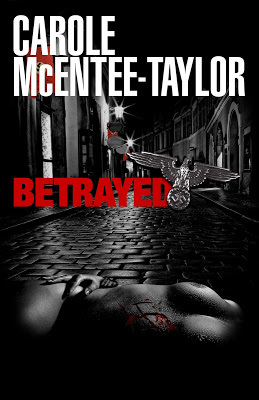
3. WHAT TYPE OF PREPARATION DO YOU DO FOR A MANUSCRIPT? DO YOU PLAN EVERYTHING FIRST OR JUST SHOOT FROM THE HIP?
I do plan the military history books, by working out chapter headings and then I write them chronologically. The novels are different. I normally know where the novels are going to end but I never really plan how I am going to get there. I just sit down and write which makes the twists and turns less predictable because even I don’t know they are going to happen until I write them! The novels have interwoven stories about different characters which run concurrently which makes them quite hard to write but easy to read. I don’t have a set pattern for writing these, sometimes I write them as they appear in the finished book, other times I run with one story and backfill in with the others.
4. WHAT DO YOU ENJOY MOST ABOUT BEING A WRITER?
I love creating different characters and seeing the finished result. But knowing that other people enjoy reading them is probably the greatest thrill.
5. WHAT IS THE HARDEST THING ABOUT BEING A WRITER?
Marketing! I’m not a natural ‘seller’ so having to find different ways of advertising the books is probably harder work than actually writing them.
6. WHAT WERE YOU IN A PAST LIFE, BEFORE YOU BECAME A WRITER?
Up until November 2015 I worked at the Military Corrective Training Centre in Colchester. This is the UK’s only military detention centre. I was a Housing Officer there for nine years, helping those leaving the military (detainees and staff) find accommodation. I also worked with Early Service Leavers (those who had served less than four years) in Colchester Garrison. I loved the job and really enjoyed working with the military personnel. Whilst there I wrote a book about the centre called Military Detention Colchester from 1947 which tells the story of its history in the words of detainees, visitors, staff etc from its origins as a POW camp for Germans and Italians in WW2 to 2010.
7. WHAT IS YOUR GREATEST WRITING ACHIEVEMENT?
I spent ages thinking about this and then realised the reason I couldn’t find an answer was because I don’t think I’ve achieved that yet. This is good because I am always seeking to improve on what I’ve already written.
8. WHAT ARE YOU WORKING ON AT THE MOMENT?
I have just finished another military history book for Pen & Sword called The History of Coalhouse Fort which will be published in May 2018 and I am about to start writing a social history of Women’s Lives in Scunthorpe from 1850s through to the 1970s for the same publisher.
I have just started a new series of novels called Secret Lives for GWL Publishing. I’m not actually sure how many books there will be in the series yet, but possibly nine or ten.
9. WHAT INSPIRES YOU?
I have always been interested in The Second World War and I like including lesser known actions and stories in my novels as it is another way of commemorating and remembering the people who gave their lives for freedom. When writing military history, I like writing biographies of ordinary people doing extra ordinary things especially if I can use personal accounts to illustrate the story.

10. DO YOU HAVE ANY TIPS FOR NEW WRITERS?
Persevere. Write something every day, even if it’s only a few lines and doesn’t make much sense. Just write what’s in your head and edit it afterwards.
I self-published Ted’s story and the original version of Lives Apart because I couldn’t get a publisher. When I started writing Herbert Columbine VC I saw a tweet from Pen & Sword asking for manuscripts. I tweeted them back and they were interested. Once they’d published that I gave them another biography I’d written, A Battle Too Far , which they also published. I then rewrote Ted’s story ( The Weekend Trippers ) under the title Surviving the Nazi Onslaught , which they also took. Publishers are looking at the bottom line. They want to make money so you have to show them how your book will do that.
Having self-published the original version of Lives Apart I decided to start looking for a fiction publisher again. My writing style had changed considerably by them so I wanted to the chance to rewrite it and by then I could show that I had sold several hundred copies and had good reviews. If you believe in the story keep going and don’t take no for an answer.
11. DO YOU SUFFER FROM WRITER’S BLOCK?
Yes and no. If I can’t think of anything to write I read over what I’ve written and edit it and then I usually find it begins to flow again. Because I am writing several stories at the same time I can normally find something to write. The secret is not to stress over it. Some days I only write 1500 words, others I will write more than 5,000.
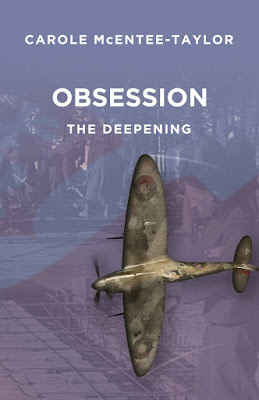
12. DO YOU HAVE A PREFERRED WRITING SCHEDULE?
Now I write full time instead of going to work and writing as well, I try and treat it as a full time job which means sitting at the computer by about 9am and working through to about 4pm. I don’t write all the time. I have breaks to do marketing and research. My characters are in different wartime situations across the globe so I have to research battles, home front life in various countries and other events that are happening at the same time because these all affect my characters’ behaviour and attitudes. It’s also really important that the historical information is accurate and things are written as they were then, not as they would be seen with hindsight and modern interpretations.
13. DO YOU HAVE A FAVOURITE WRITING PLACE?
I like writing in my conservatory, surrounded by plants, with music playing.
14. WHAT IS YOUR GREATEST JOY IN WRITING?
It keeps me sane! My mind is very active and like most people who think a lot I am prone to anxiety so by filling my head up with plots and stories I have less time and space to worry about other things.
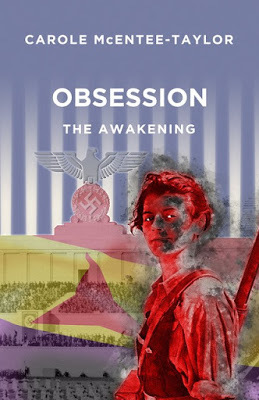
15. WHO IS YOUR FAVOURITE AUTHOR AND WHY?
I like Barbara Erskine because of the mix of history and spirituality. I also like Ken Follet and I am looking forward to reading his new book which comes out later this month. I normally only read fiction when I’m writing military history because I don’t want to be influenced when I’m writing my own novels.
16. WHAT’S THE GREATEST COMPLIMENT YOU EVER RECEIVED FROM A READER?
My favourite compliment is from a lady who messaged me on Facebook to say she had sat up reading book four in the Obsession series until 4 in the morning because she couldn’t put it down.
17. WHAT WAS THE WORST COMMENT FROM A READER?I had one woman complain the books were badly edited because I’d used the word ‘alright’ and that it should be ‘all right’ and that this had ruined the books completely. She stuck the same review on every book in the series so presumably it hadn’t ruined them that much or she wouldn’t have bothered to buy them all
Published on December 21, 2017 11:58
December 20, 2017
21 December 2017 - TOVA SAUL – THE STRAY CAT LADY
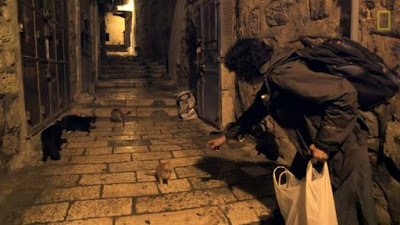
TOVA SAUL- THE STRAY CAT LADY -
G'day folks,
Ever since she moved to Jerusalem from Toronto, in the 1980s, Tova Saul has dedicated her life to looking after the street cats of Israel.
She prowls the streets of the Old City carrying bags of food for the felines, provides medical attention to any injured animals she finds by either taking them to the vet, or welcoming them into her home, and takes females to be spayed in hopes of slowing down the rate at which the street cat population of Jerusalem has been growing for several decades. Some call her the “Cat Lady of Jerusalem”, but she is more of an unofficial chief caretaker of the stray cats in the Israeli city.
The Mediterranean basin in general is home to a lot of cats, due to the favorable climate – the weather is generally warm and winters are very mild. It is estimated that there are currently over two million street cats in Israel today, and about 100,000 of them are in Jerusalem. It wasn’t always like this though. Up until the 1930s, the cat population was small, but under the British Mandate, felines were brought in to deal with the rat problem, and they thrived.
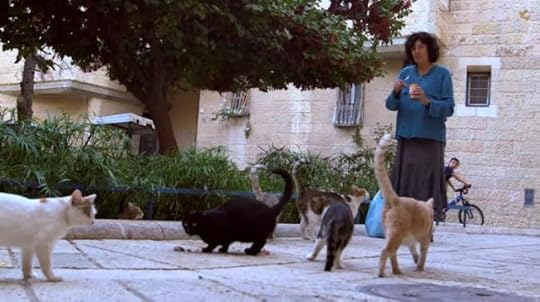
They’ve been multiplying at such an accelerated rate that, a couple of years ago, the Israeli minister of agriculture suggested that all male or female cats be deported to another receptive country. That has yet to happen, but it gives you an idea of how authorities intend on dealing with the problem. That’s definitely not how Tova Saul sees things. She believes that compassion and responsibility are key to finding a viable solution to this issue.
Saul has been trying to help the street cats in Jerusalem Old City ever since she came to Israel, nearly four decades ago. She only started keeping count of the cats she rescued and spayed in 2009, and the number is currently over 600. Every day, she walks through the ancient quarter carrying bags full of cat food and a couple of cages, in case she finds any felines in need of medical care, or a female that has to be spayed. She refers to her home as a revolving door for cats, because as soon as she gets a cat on its feet and ready to be released, another one comes in. But she’s been doing it for so long that it has become a lifestyle.

“Six hundred and twenty cats having kittens — they can have kittens two or three times a year, each cat having three or four kittens at a time,” Saul said about the cats she has spayed since 2009. “Most of those kittens die after a lot of suffering and literally hundreds of people walking past them, watching them go blind, watching them crying for their mothers, watching them being eaten alive by fleas.”
Although Tova Saulworks with a number of veterinary clinics and cat shelters in Jerusalem, she says that most people don’t really care about cats and their problems. They don’t see neutering and spaying as a necessity, especially the religious folks. Some are actually against such practices, and even Israel’s Minister of Agriculture, Uri Ariel once declared himself against them, citing a biblical commandment to populate the earth. He soon retracted his statement, after media backlash.
Many people think they are helping the cats by throwing them food every day, but they are only contributing to the problem, Saul says, because they are not spaying them, so they just wonder off and keep reproducing. Tova sometimes gets into trouble when confronted by religious people who interfere with her efforts to catch female cats to be spayed, but after so many years on the “front lines” it’s almost become routine.
And then there is the fact that people have gotten so use to seeing the cats everywhere, and the preconception that they’ll be fine on their own. But Tova Saul claims that that’s not the case at all. There really isn’t that much trash for the cats to go scouring for food in, not with so many of them around, anyway. Plus, they are often victims of physical abuse, become infested with fleas, and many kittens are abandoned and die a slow and cruel death. She does all she can to help as many of them as she can, but she is just one person.
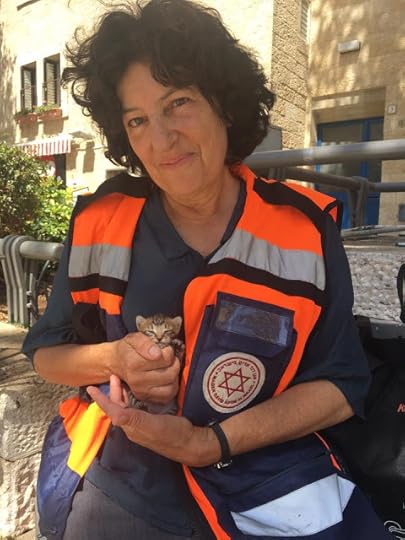
Tova Saul is often referred to as the Cat Lady of Jerusalem, but she doesn’t like the nickname. “When people refer to me as the cat lady, they are actually defining everybody else as people who won’t lift a finger to help an animal in need. So really it’s an insult to the human race,” she told AFP.
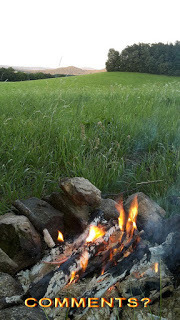
Clancy's comment: Mm ... Each to their own, eh? This certainly would not be my calling.
I'm ...


Published on December 20, 2017 12:36
December 19, 2017
20 December 2017 - INTERESTING FACTS ABOUT COWS

INTERESTING FACTS ABOUT COWS
G'day folks,
Welcome to some facts about a creature that many take for granted. Cows like to sleep close to their families, and sleeping arrangements are determined by individuals’ rank in the social hierarchy.

Quick FactsType: MammalDiet: HerbivoreLifespan: 20-25 yearsSize: Varies with breed however average is around 1.4m highWeight: Average 750 kgHabitat: Various including rain forests, wetlands, prairies, savannas and temperate forestsRange: Africa, Asia, Eastern Europe and North AmericaScientific name: Bos Amazing Facts About the Cow
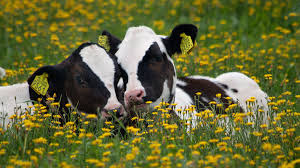 Like humans, cows (cattle) form close friendships and choose to spend much of their time with 2-4 preferred individuals. They also hold grudges for years and may dislike particular individuals.Cows display emotions and have been shown to produce more milk when they are treated better and as individuals.Cattle get excited when they solve problems. When faced with the challenge of trying find out how to open a door to reach food, their heartbeats went up, their brainwaves showed excitement, and some even jumped into the air.Cows show their excitement when let out into a field after long periods confined indoors.Cattle like to sleep close to their families, and sleeping arrangements are determined by individuals’ rank in the social hierarchy.Cows are devotional mothers and are known to walk for miles to find their calves.Cattle are extremely curious and inquisitive animals which will investigate everything.Like many other grazing animals cattle have one stomach which is divided into four compartments or chambers: the rumen, reticulum, omasum and abomasum. This allows them to digest grain and grasses most effectively. Cattle have almost 360° panoramic vision. This helps them to see predators coming from any direction.Cattle have an excellent sense of smell. They can detect odours up to five miles away. They can also hear both low and high frequency sounds beyond human capability.The cow is a protected animal in Hinduism, and Hindus do not eat beef. Cows are honoured at least once a year, on Gopastami. On this day cows are washed and decorated in temples.Mahatma Ghandi described a cow as “a poem of compassion”, also stating that “I worship the cow and I shall defend its worship against the whole world”.The meat of cows is widely eaten by people across the world. Cows’ milk is also drunk and used to make other products such as cheese and butter. Many people who consume animal products would like to choose products from animals kept in higher welfare systems. The majority of cows farmed across the world are reared in intensive farming systems which can cause them to suffer greatly.
Like humans, cows (cattle) form close friendships and choose to spend much of their time with 2-4 preferred individuals. They also hold grudges for years and may dislike particular individuals.Cows display emotions and have been shown to produce more milk when they are treated better and as individuals.Cattle get excited when they solve problems. When faced with the challenge of trying find out how to open a door to reach food, their heartbeats went up, their brainwaves showed excitement, and some even jumped into the air.Cows show their excitement when let out into a field after long periods confined indoors.Cattle like to sleep close to their families, and sleeping arrangements are determined by individuals’ rank in the social hierarchy.Cows are devotional mothers and are known to walk for miles to find their calves.Cattle are extremely curious and inquisitive animals which will investigate everything.Like many other grazing animals cattle have one stomach which is divided into four compartments or chambers: the rumen, reticulum, omasum and abomasum. This allows them to digest grain and grasses most effectively. Cattle have almost 360° panoramic vision. This helps them to see predators coming from any direction.Cattle have an excellent sense of smell. They can detect odours up to five miles away. They can also hear both low and high frequency sounds beyond human capability.The cow is a protected animal in Hinduism, and Hindus do not eat beef. Cows are honoured at least once a year, on Gopastami. On this day cows are washed and decorated in temples.Mahatma Ghandi described a cow as “a poem of compassion”, also stating that “I worship the cow and I shall defend its worship against the whole world”.The meat of cows is widely eaten by people across the world. Cows’ milk is also drunk and used to make other products such as cheese and butter. Many people who consume animal products would like to choose products from animals kept in higher welfare systems. The majority of cows farmed across the world are reared in intensive farming systems which can cause them to suffer greatly.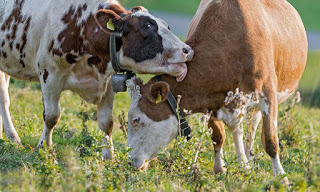
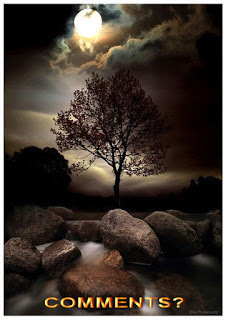
Clancy's comment: I've owned some of these, and spent a lot of time with them since I was a kid. They serve a good purpose and do their job well. But, they sure can eat!
I'm ...
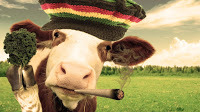

Published on December 19, 2017 13:36
December 18, 2017
19 December 2017 - MOVING PICTURES

MOVING PICTURES
G'day folks,
Welcome to some more of those moving pictures.

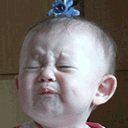



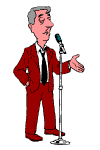
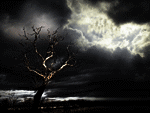
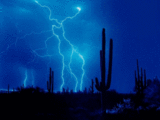

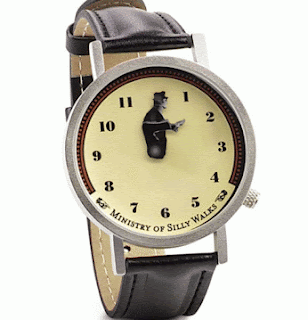
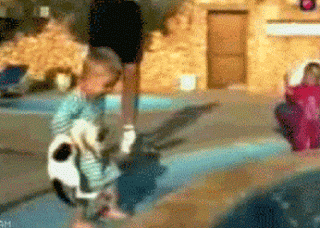
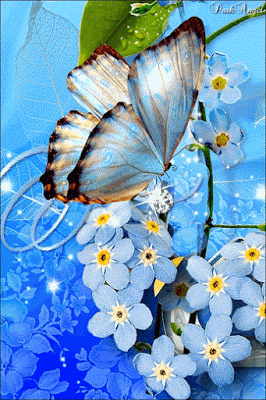
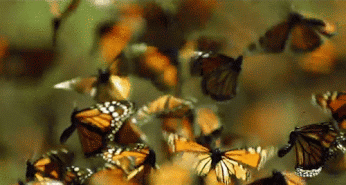
[image error]




Clancy's comment: I love the kid with the cat.
I'm ...

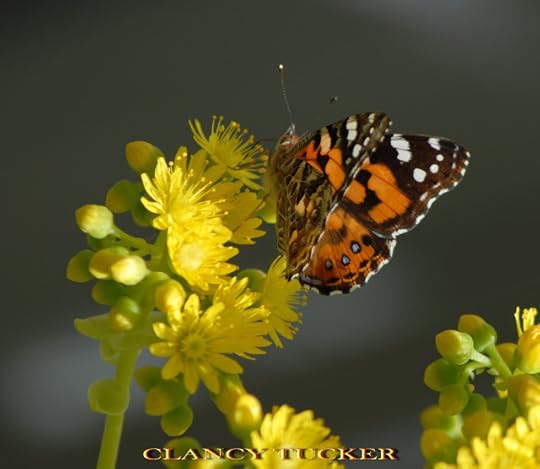
Published on December 18, 2017 12:22



